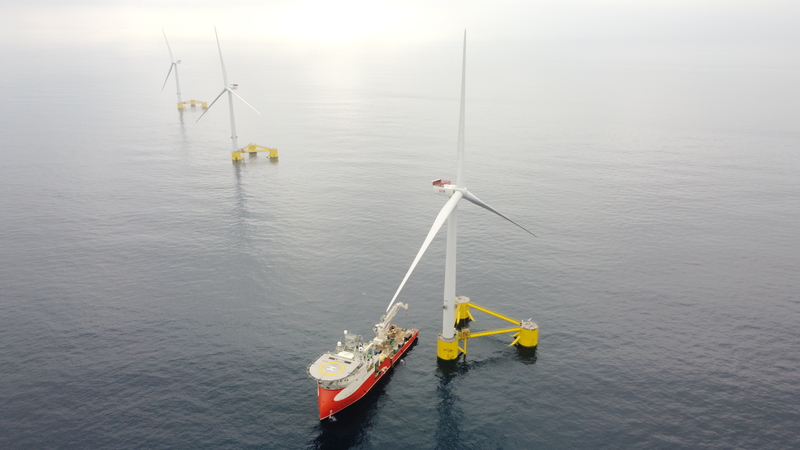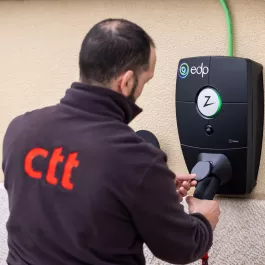
The first floating wind farm in continental Europe is now fully operational

The last platform of WindFloat Atlantic has been connected to the grid and the windfarm has been fully commissioned. The three units are now supplying the Portuguese electrical grid with the energy generated by their 8.4 MW wind turbines, the world's largest turbines ever installed on a floating platform.
WindFloat Atlantic is now fully operational and supplying clean energy to Portugal's electrical grid. Following the connection of the last of the three platforms to the 20 m export cable connecting the wind farm to the substation at Viana do Castelo, Portugal, the construction of the wind farm is now complete. WindFloat Atlantic, which has total installed capacity of 25 MW is the world’s first semi-submersible floating wind farm and will generate enough energy to supply the equivalent of 60,000 users per year, saving almost 1.1 million tons of CO2..
This milestone cements the success of a decade-long project by the Windplus joint venture, ensuring access to the best wind resources in water depths that have previously been inaccessible. Windplus has successfully installed and connected three platforms - measuring 30 metres in height with a 50 metre distance between columns - which are able to accommodate 8.4 MW turbines, the world's largest ever installed on a floating platform.
This project's success is rooted in its technology. Its mooring technology, for example, allows for installation in waters over 100 m deep, and its design offers stability in adverse weather and sea conditions. Another key advantage was the assembly technology used: dry-dock assembly provided significant logistical and financial savings, and the platforms were towed using standard tug boats.
These technical advantages, among others, clearly show that Windfloat Atlantic's model is replicable in other areas where adverse seabed conditions or significant water depth mean that traditional bottom-fixed offshore wind technology is not an option.
About WindFloat Atlantic
The project is led by the Windplus consortium, comprising EDP Renewables (54.4%), ENGIE (25%), Repsol (19.4%) and Principle Power Inc. (1.2%). The platforms have been built jointly by the two Iberian countries: two of them were manufactured at the shipyards in Setúbal (Portugal), while the third was constructed in Avilés and Fene (Spain).
This initiative has had the support from public and private institutions, encouraging companies that are leaders in their respective markets to take part in the project; while the Government of Portugal, European Commission and the European Investment Bank have provided financial support. The partners that have made this project possible include, in addition to Principle Power, the joint venture Navantia/Windar, the A- Silva Matos Group, Bourbon, the wind turbine supplier MHI Vestas and dynamic cable supplier JDR Cables.
About WindFloat® technology
Because it can be placed in very deep waters, WindFloat® can unlock energy resources in vast areas of the sea, addressing major societal challenges, such as the clean energy transition, energy security and climate change, whilst bringing jobs, economic growth and opportunities for sustainable investment.
The advantages of this technology include aptness for dry-dock assembly and towing without the need for specialised towing craft, as well as not having to rely on complex offshore operations associated with the installation of traditional bottom-fixed structures. These factors contribute towards driving down lifecycle costs and reducing risks.
Additionally, the WindFloat® foundation can accommodate the world's largest available turbines, contributing to increasing energy production and making significant reductions in lifecycle costs.

